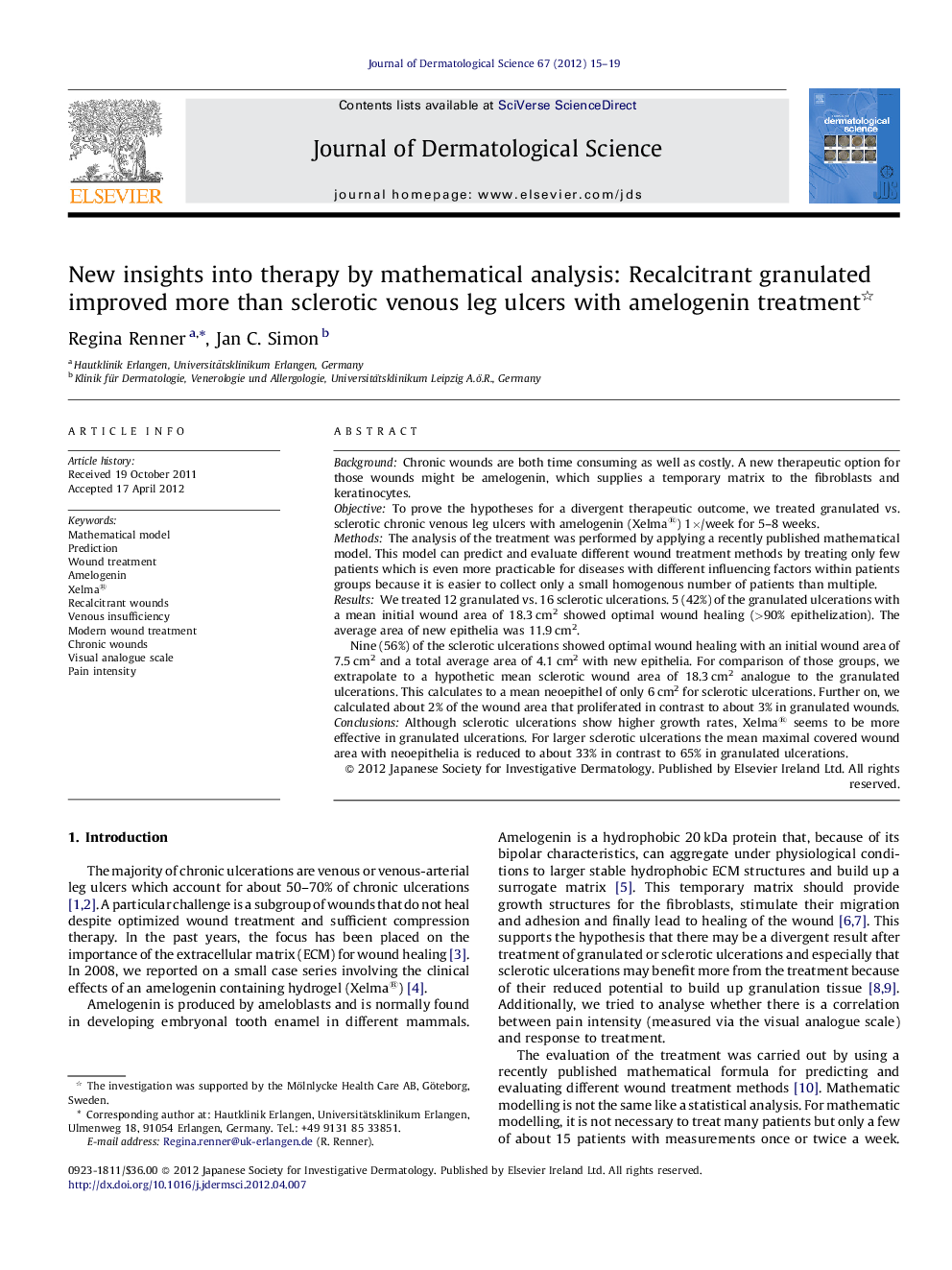| Article ID | Journal | Published Year | Pages | File Type |
|---|---|---|---|---|
| 3213084 | Journal of Dermatological Science | 2012 | 5 Pages |
BackgroundChronic wounds are both time consuming as well as costly. A new therapeutic option for those wounds might be amelogenin, which supplies a temporary matrix to the fibroblasts and keratinocytes.ObjectiveTo prove the hypotheses for a divergent therapeutic outcome, we treated granulated vs. sclerotic chronic venous leg ulcers with amelogenin (Xelma®) 1×/week for 5–8 weeks.MethodsThe analysis of the treatment was performed by applying a recently published mathematical model. This model can predict and evaluate different wound treatment methods by treating only few patients which is even more practicable for diseases with different influencing factors within patients groups because it is easier to collect only a small homogenous number of patients than multiple.ResultsWe treated 12 granulated vs. 16 sclerotic ulcerations. 5 (42%) of the granulated ulcerations with a mean initial wound area of 18.3 cm2 showed optimal wound healing (>90% epithelization). The average area of new epithelia was 11.9 cm2.Nine (56%) of the sclerotic ulcerations showed optimal wound healing with an initial wound area of 7.5 cm2 and a total average area of 4.1 cm2 with new epithelia. For comparison of those groups, we extrapolate to a hypothetic mean sclerotic wound area of 18.3 cm2 analogue to the granulated ulcerations. This calculates to a mean neoepithel of only 6 cm2 for sclerotic ulcerations. Further on, we calculated about 2% of the wound area that proliferated in contrast to about 3% in granulated wounds.ConclusionsAlthough sclerotic ulcerations show higher growth rates, Xelma® seems to be more effective in granulated ulcerations. For larger sclerotic ulcerations the mean maximal covered wound area with neoepithelia is reduced to about 33% in contrast to 65% in granulated ulcerations.
